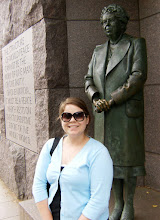Topic 15
Holly Tetreault
Emotional and Behavioral Disorders
Evaluating PBS Plans
The Basics
PBS refers to positive behavior supports. SWPBS is a school wide positive behavior support program that an entire school takes part in. Evaluation of these programs is essential to maintaining its effectiveness. The National PBIS (Positive Behavior Interventions & Supports) website provides all the information necessary to evaluate a SWPBS plan. The first section is comprised of school wide evaluation tools. This also includes case studies and examples. The second section focuses on tiers 2 and 3. This section includes checklists and functional behavior assessments. The third section contains SIMEO tools. SIMEO represents Systematic Information Management for Educational Outcomes. This provides resources to schools, families, and students.
So what does a school wide plan look like? This is an example of a review I wrote about my schools PBS plan. We are White Church Elementary in Kansas City, KS. Our school wide motto is "Be Respectful, Be a Learner, Be in Control." This is a summary of how our SWPBS plan works!
Example of a SWPBS
White Church Elementary has a School-Wide Positive Behavior Support Program in place. Our school rules are, “Be Respectful, Be a Learner, and Be in Control.” The rules apply for our hallways, bathrooms, cafeteria, and classrooms. We begin the year with a PBS program to model what these behaviors look like for our students. In addition we have a school wide token, the Bee Buck. Teachers are allowed to give these to any student who is “caught” following the rules. Students who are walking appropriately, using indoor voices and appropriate voices, keeping hands to themselves, and are being respectful to others are rewarded with bee bucks. The prize for the bee bucks change ever 4-5 weeks.
Our PBS team is the same as our SIT B (Student Intervention Team-Behavior) team. We meet every Tuesday at 8:00 in the morning. If a student is referred to the SIT team we will meet every other week with the teachers to address those behavior issues. Every other week we meet to discuss our PBS program. We brainstorm activities for incentives, funding ideas, and evaluate data to determine if our plan is working. We have six members to our team. Our principal, our fifth grade teacher who serves as the head of the PBS team, our fourth/fifth multi grade teacher, a third grade teacher, a first grade teacher, and myself, the special education teacher.
We use SWIS (School Wide Information System) to collect data on our students. A print out will break down for us the number of referrals we have as a school, how many per grade, and which students specifically. The data also shows what time of day had the most referrals, where the incidents occurred, and what the offenses were that students were written up for. For example, we looked at the data and November and the first thing we noticed is that the most incidents happened on the playground around 1:30. We know this is when fourth and fifth grade is at recess. We also noticed that most of the referrals were written for physical aggression. Furthermore there were four forth grade students that made up nearly 50% of all referrals. After reviewing the data and analyzing the situation we realized that these four students fight over kickball and who can bring in the balls from recess. On these occasions the fights became physical. We decided as a team a plan to put in place during recess in the spring. (We did not have outdoor recess in December, January, and most of February.) We would post the rules of kickball outside, a teacher would monitor the game, and students would have a rotating schedule for who could bring in the balls. When we reviewed data again at the end of March we noticed that referrals for recess for that age group had gone down.
I conduct reading groups for grades kindergarten through 5th grade in my classroom in the mornings. I incorporate PBS by following the school wide plan. We have an apple tree in our room. There is a ladder from the apple tree to the ground and a basket at the bottom. Each group has an apple. If the group has followed the rules, “Be respectful, be a learner, and be in control,” then there apple falls. When the groups’ apple reaches the basket they can choose something from the prize box or choose to have lunch with the teacher. I also reward students with Bee Bucks during the group for things like coming in quietly, sitting at the table, pushing in their chairs, using indoor voices, and working hard.
Our PBS team decides the incentives for Bee Bucks. We alternate doing whole school rewards with classroom rewards. At the beginning of the year we start with a short, whole school reward. Each class sets a goal for how many bee bucks each student needs to earn. Students who meet that goal on time get to participate in an extra recess and have popsicles. We then let teachers set a class goal for the next turn. Goals are typically extra recess, pajama day, a movie, and other treats and activities. Other school wide rewards we’ve had have been a school wide movie with popcorn and soda or juice the last day before the holiday break, a school wide extra recess with a sports theme, and a luau lunch in the cafeteria with all students.
Our PBS program is currently funded by a grant. However, we have begun to brainstorm possible fundraising activities for the upcoming year when the grant will expire. We are working with PAWS (Parents at Work in School) to help coordinate events and activities.

No comments:
Post a Comment